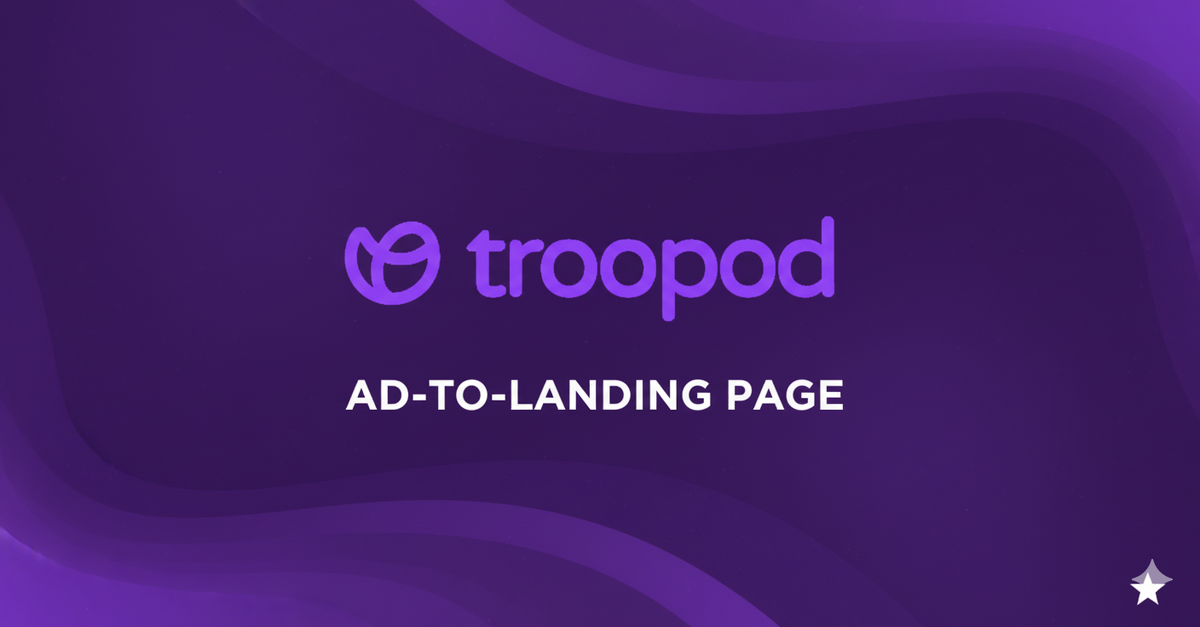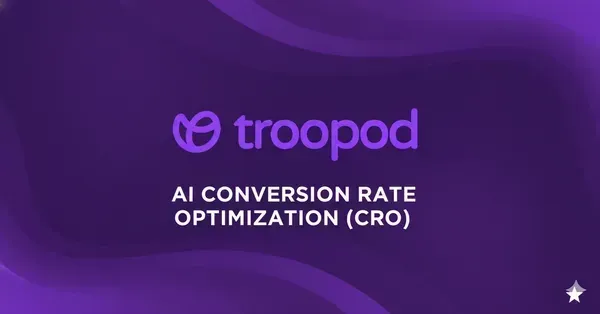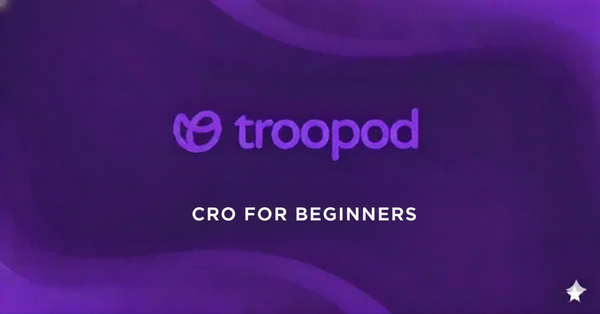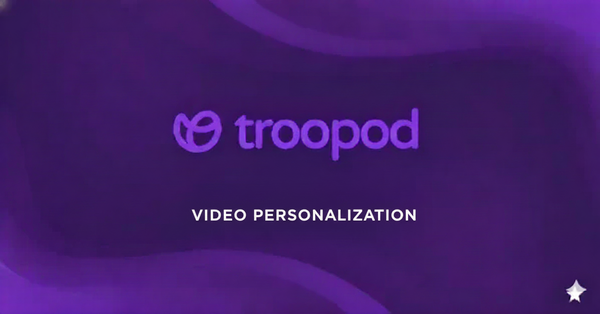Revolutionizing Conversion Optimization: How AI-Driven CRO is Redefining Digital Marketing Success in 2025

The digital marketing landscape has reached a critical inflection point. While businesses pour unprecedented resources into traffic acquisition spending $92 for every $1 invested in conversion optimization traditional CRO approaches are crumbling under the weight of modern complexity. The old playbook of static A/B tests and one-size-fits-all optimization simply can't keep pace with today's hyper-personalized, multi-channel customer journeys.
Enter AI-driven Conversion Rate Optimization: a paradigm shift that's transforming how forward-thinking brands approach digital optimization. By leveraging machine learning, predictive analytics, and real-time personalization, AI-CRO isn't just improving conversion rates it's fundamentally rewriting the rules of digital customer experience.
The Death of Traditional CRO: Why Legacy Methods Are Failing
The "Average User" Fallacy
Traditional CRO's biggest flaw lies in its foundational assumption: that optimizing for an "average user" will improve overall performance. This approach ignores the reality of diverse user behaviors and preferences.
Consider a beauty brand testing red versus blue checkout buttons across its entire audience. While traditional CRO might declare one color the "winner," this oversimplified approach misses critical nuances:
- Gen Z shoppers demand interactive, mobile-first experiences with social commerce features
- Millennials respond better to detailed product information and peer reviews
- Gen X users prefer streamlined, trust-signal-heavy checkout processes
By optimizing for an imaginary average, brands are actually optimizing for no one.
Static Testing in a Dynamic World
The traditional A/B testing model is fundamentally misaligned with modern market realities:
- Time lag disaster: Manual testing requires 2-4 weeks for statistical significance
- Market velocity: User behavior and competitive conditions evolve faster than test cycles
- Opportunity cost: While traditional teams test 2-3 variables, AI systems optimize 50+ simultaneously
By the time traditional tests reach significance, the market has already moved on.
Fragmented Channel Experiences
Legacy CRO treats each touchpoint as an isolated optimization opportunity. This creates:
- Inconsistent messaging across landing pages, product pages, and email campaigns
- Broken personalization when users move between channels
- Friction points that compound throughout the customer journey
The result? A disjointed experience that contradicts users' expectations for seamless, personalized interactions.
The Financial Reality: Why CRO Transformation is Urgent
The numbers paint a stark picture of traditional CRO's inadequacy:
- 89% of marketers report losing critical optimization data due to privacy restrictions
- Customer acquisition costs have surged 60% year-over-year across D2C brands
- Conversion rates continue declining despite increased testing efforts
The verdict is clear: traditional CRO methodologies are not just ineffective—they're actively hindering growth in 2025's competitive landscape.
The AI-CRO Revolution: A 5-Phase Framework for Success
Phase 1: Intelligence Collection - Building the Foundation
AI-powered CRO begins with comprehensive behavioral intelligence that goes far beyond basic analytics:
Real-Time Behavioral Tracking
- Cross-device user journey mapping
- Micro-interaction analysis (scroll depth, hover patterns, click sequences)
- Session replay with ML-powered insight extraction
Predictive Intelligence
- Intent scoring using machine learning models
- Behavioral segmentation through clustering algorithms
- Churn prediction and opportunity identification
Cross-Platform Journey Mapping
- First-party data integration across all touchpoints
- Attribution modeling with AI-enhanced accuracy
- Real-time data streaming for immediate optimization
Phase 2: Automated Hypothesis Generation - Scaling Innovation
Large Language Models revolutionize the ideation process by removing human bottlenecks:
Competitive Intelligence
- NLP-powered competitor analysis and trend identification
- Automated market research and opportunity discovery
- Best practice extraction from industry data
Dynamic Variant Creation
- Automated test design based on behavioral segments
- Personalized hypothesis generation for different user types
- Predictive performance modeling before launch
Multi-Dimensional Testing
- Simultaneous optimization across multiple journey stages
- Cross-channel hypothesis development
- Seasonal and contextual adaptation strategies
Phase 3: Dynamic Personalization Orchestration - Real-Time Adaptation
Move beyond static rules to create truly adaptive experiences:
Millisecond-Level Personalization
- Real-time content adaptation based on user behavior
- Dynamic pricing and offer optimization
- Contextual product recommendations using collaborative filtering
Cross-Channel Consistency
- Unified messaging from ads to email to website
- Personalized journey orchestration across all touchpoints
- Real-time campaign optimization based on performance data
Micro-Moment Interventions
- Exit-intent optimization with personalized offers
- Real-time cart abandonment prevention
- Dynamic social proof and urgency messaging
Phase 4: Intelligent Experimentation - Continuous Optimization at Scale
AI transforms testing from periodic campaigns to continuous optimization:
Advanced Testing Capabilities
- Multi-variant testing across 50+ variables simultaneously
- Real-time traffic allocation based on performance
- Automated stopping rules to prevent wasted spend
Predictive Test Design
- Confidence forecasting before test launch
- Sample size optimization using Bayesian statistics
- Risk assessment and ROI prediction
Intelligent Analysis
- Automated winner detection with statistical confidence
- Segment-specific performance analysis
- Predictive modeling for long-term impact
Phase 5: Continuous Learning Loop - Compounding Intelligence
The most powerful aspect of AI-CRO is its ability to compound learning over time:
Adaptive Models
- ML algorithms that improve with each interaction
- Seasonal pattern detection and optimization
- Market trend adaptation and competitive response
Performance Feedback
- Real-time model accuracy monitoring
- A/B testing of ML models themselves
- Continuous feature engineering and optimization
Strategic Intelligence
- Long-term customer lifetime value optimization
- Cohort analysis and retention improvement
- Revenue attribution across complex customer journeys
Technology Stack: Building Your AI-CRO Infrastructure
Core Infrastructure Requirements
Customer Data Platform (CDP)
- Real-time data ingestion and processing
- Identity resolution across devices and channels
- Privacy-compliant data management and storage
AI/ML Experimentation Platform
- Automated testing and optimization capabilities
- Real-time personalization engines
- Predictive analytics and forecasting tools
Behavioral Analytics Suite
- Advanced segmentation and clustering
- Predictive modeling capabilities
- Cross-channel attribution and journey analysis
Integration Essentials
API-First Architecture
- Seamless connectivity between tools and platforms
- Real-time data streaming capabilities
- Scalable, cloud-native infrastructure
Privacy-First Design
- Consent management and compliance automation
- First-party data collection optimization
- Contextual targeting without third-party cookies
Performance Monitoring
- Sub-second response time tracking
- Real-time optimization impact measurement
- Automated alert systems for performance anomalies
Essential Tool Categories
| Category | Function | Key Capabilities |
|---|---|---|
| Behavioral Intelligence | Micro-interaction analytics | Heat mapping, session replay, intent scoring |
| AI Experimentation | Automated multivariate testing | Real-time optimization, predictive modeling |
| Personalization Engine | Real-time content delivery | Dynamic content, offers, recommendations |
| Attribution Modeling | Multi-touch analysis | AI-enhanced attribution, journey optimization |
| Performance Monitoring | Live impact tracking | Real-time dashboards, automated reporting |
Measuring Success: KPIs for AI-Driven CRO
Primary Conversion Metrics
Revenue Impact
- Conversion lift by channel and customer segment
- Revenue per visitor with statistical confidence intervals
- Customer lifetime value improvement through personalization
- Time-to-conversion reduction across user journeys
AI-Specific Performance Indicators
Model Performance
- Machine learning model accuracy and confidence scores
- Personalization relevance ratings from user feedback
- Test velocity and time-to-statistical significance
- Real-time system response times and reliability
Business Impact Measurement
Efficiency Gains
- Customer acquisition cost reduction
- Average order value increase through AI-powered upsells
- Customer retention improvement via personalization
- Organic growth driven by enhanced user satisfaction
Overcoming Implementation Challenges
Challenge 1: Data Quality and Integration
The Problem: Fragmented data sources and poor data quality undermine AI effectiveness.
The Solution:
- Implement comprehensive first-party data collection strategies
- Use progressive profiling and value exchanges (quizzes, personalized content)
- Invest in robust data cleaning and validation processes
- Create unified customer profiles across all touchpoints
Challenge 2: Privacy Compliance and User Trust
The Problem: Increasing privacy regulations and user concerns about data usage.
The Solution:
- Adopt privacy-first architectures with contextual targeting
- Implement server-side personalization to protect user data
- Design consent-driven experiences that provide clear value
- Use federated learning and differential privacy techniques
Challenge 3: Organizational Change Management
The Problem: Resistance to new technologies and processes within traditional marketing teams.
The Solution:
- Form cross-functional CRO teams with diverse skill sets
- Provide comprehensive training on AI tools and methodologies
- Document workflows and create best practice guidelines
- Start with pilot projects to demonstrate value before scaling
Challenge 4: Scaling Technical Infrastructure
The Problem: Legacy systems cannot handle real-time AI processing requirements.
The Solution:
- Migrate to cloud-native, API-first architectures
- Implement horizontal scaling capabilities for traffic spikes
- Invest in real-time data processing infrastructure
- Partner with specialized AI-CRO platform providers
The Future of Conversion Optimization
As we move deeper into 2025, AI-driven CRO represents more than just an evolution of traditional optimization it's a fundamental reimagining of how brands create and optimize customer experiences. The organizations that embrace this transformation today will build sustainable competitive advantages that compound over time.
The choice is clear: continue struggling with outdated optimization methods that optimize for no one, or embrace AI-driven CRO systems that deliver personalized, high-converting experiences at scale. In a world where customer expectations continue to rise and acquisition costs spiral upward, AI-CRO isn't just an opportunity—it's a necessity for sustainable growth.
The revolution in conversion optimization has begun. The question isn't whether AI will transform CRO, but whether your organization will be leading or following this transformation.
Ready to revolutionize your conversion optimization strategy? The time to act is now because in 2025's competitive landscape, standing still means falling behind.





